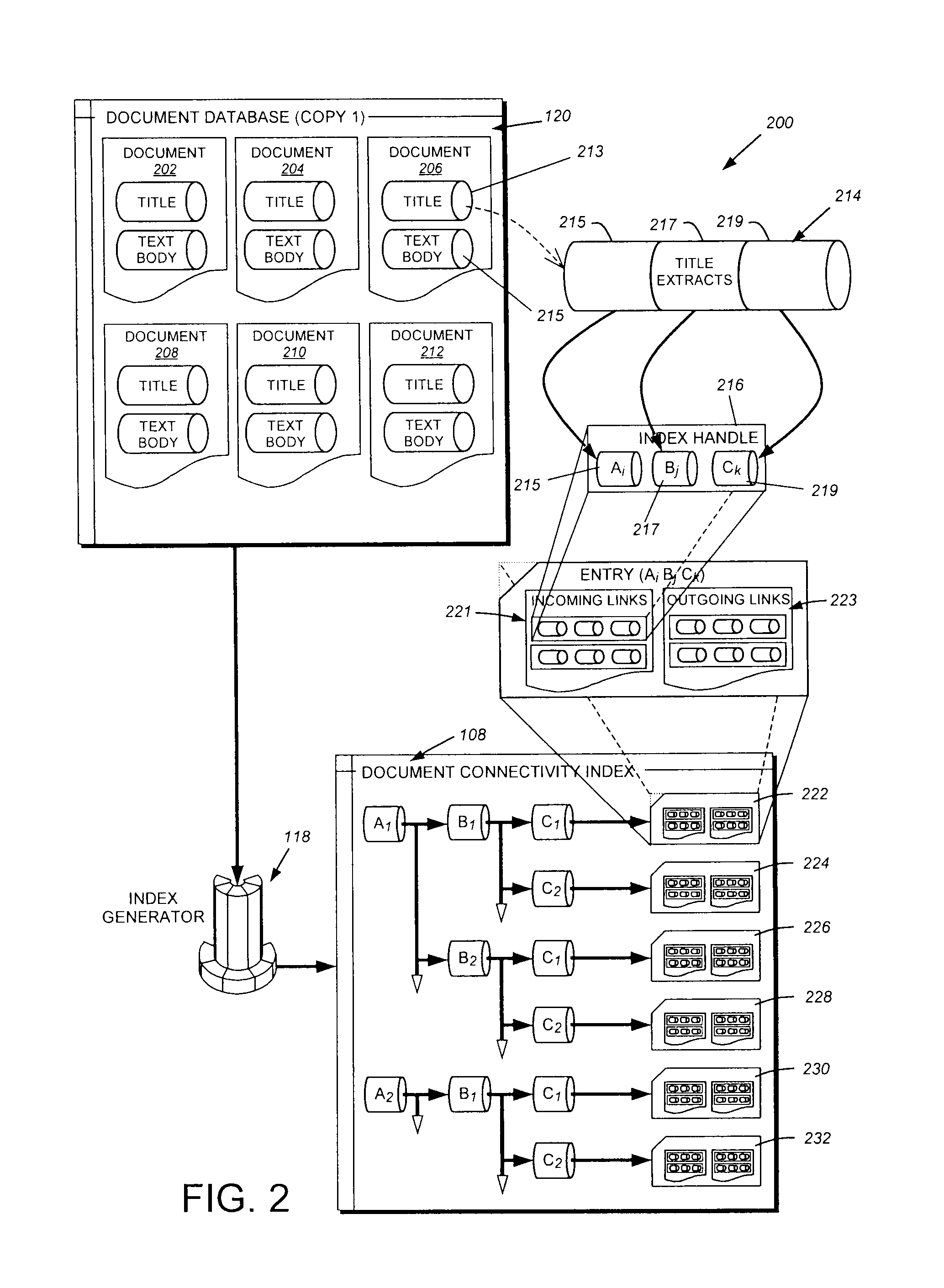System and method for searching and displaying text-based information contained within documents on a database
a database and text-based technology, applied in the field of search engines, can solve the problems of inability to store information with greater reliability, inability to use the internet to achieve the effect of enhancing search efficiency, and aging, and achieve the effect of improving search efficiency
- Summary
- Abstract
- Description
- Claims
- Application Information
AI Technical Summary
Benefits of technology
Problems solved by technology
Method used
Image
Examples
Embodiment Construction
[0031]FIG. 1 details a simplified arrangement for a Document Database and Internet Network 100 for use by the system and method of this invention. A network enables communication by various computing devices through the Internet using an Internet Protocol (TCP / IP) network layer shown generally as the cloud 102. Included in the cloud 102, but not shown, is an interconnected plurality of routers, with the routers enabling the TCP / IP-layer address packets of digital information to pass from a source to a destination via the cloud. The principles governing these functionalities are well known.
[0032]An exemplary client 104 is shown. The client 104 is generally defined as a microcomputer having a display 103, a keyboard 105 for entering alphanumeric data, and a mouse 107, or similar human-machine interface (HMI) device for graphical-user-interface (GUI) data manipulation. Typically, the display supports a conventional GUI that facilitates more—intuitive interaction between a user and the ...
PUM
 Login to View More
Login to View More Abstract
Description
Claims
Application Information
 Login to View More
Login to View More - R&D
- Intellectual Property
- Life Sciences
- Materials
- Tech Scout
- Unparalleled Data Quality
- Higher Quality Content
- 60% Fewer Hallucinations
Browse by: Latest US Patents, China's latest patents, Technical Efficacy Thesaurus, Application Domain, Technology Topic, Popular Technical Reports.
© 2025 PatSnap. All rights reserved.Legal|Privacy policy|Modern Slavery Act Transparency Statement|Sitemap|About US| Contact US: help@patsnap.com



